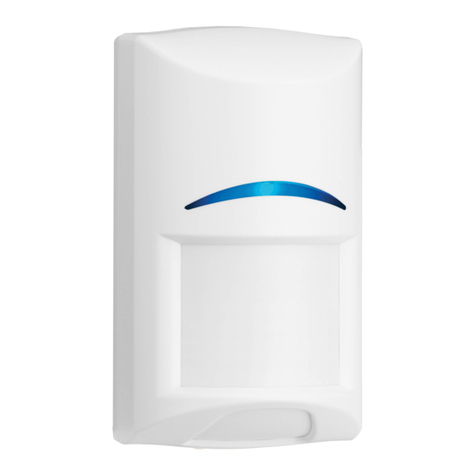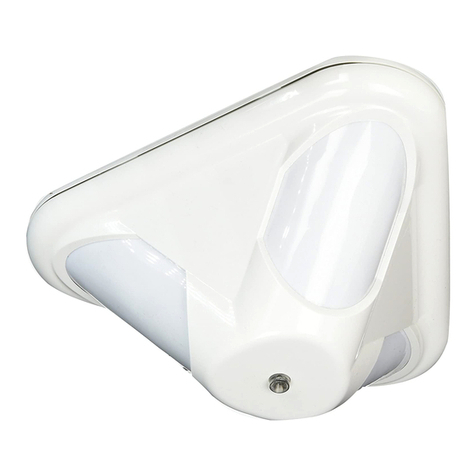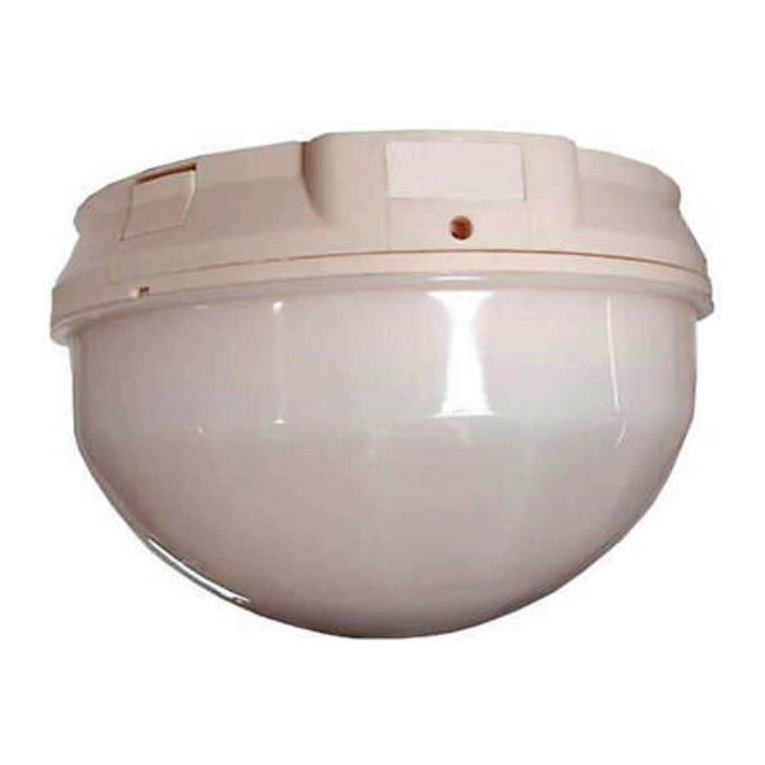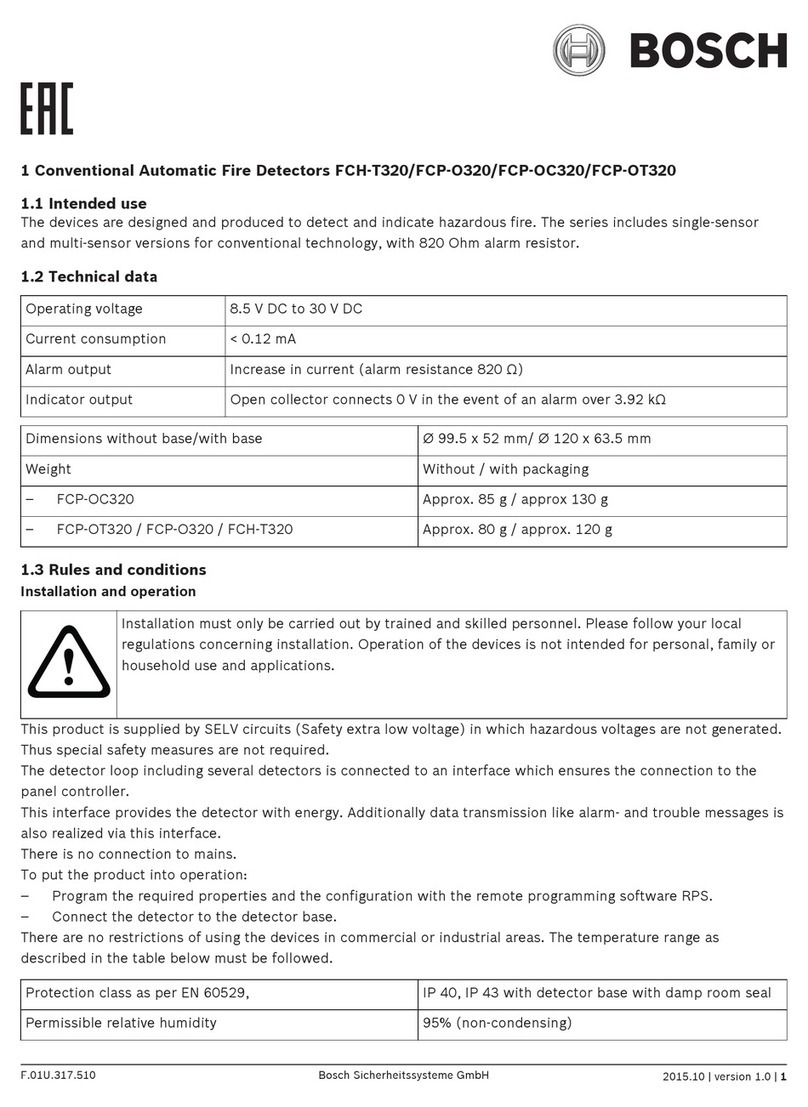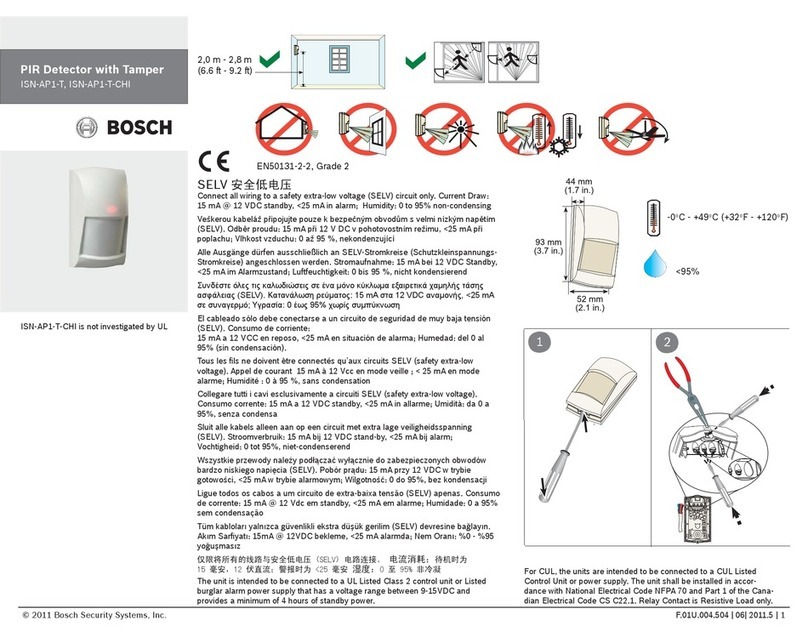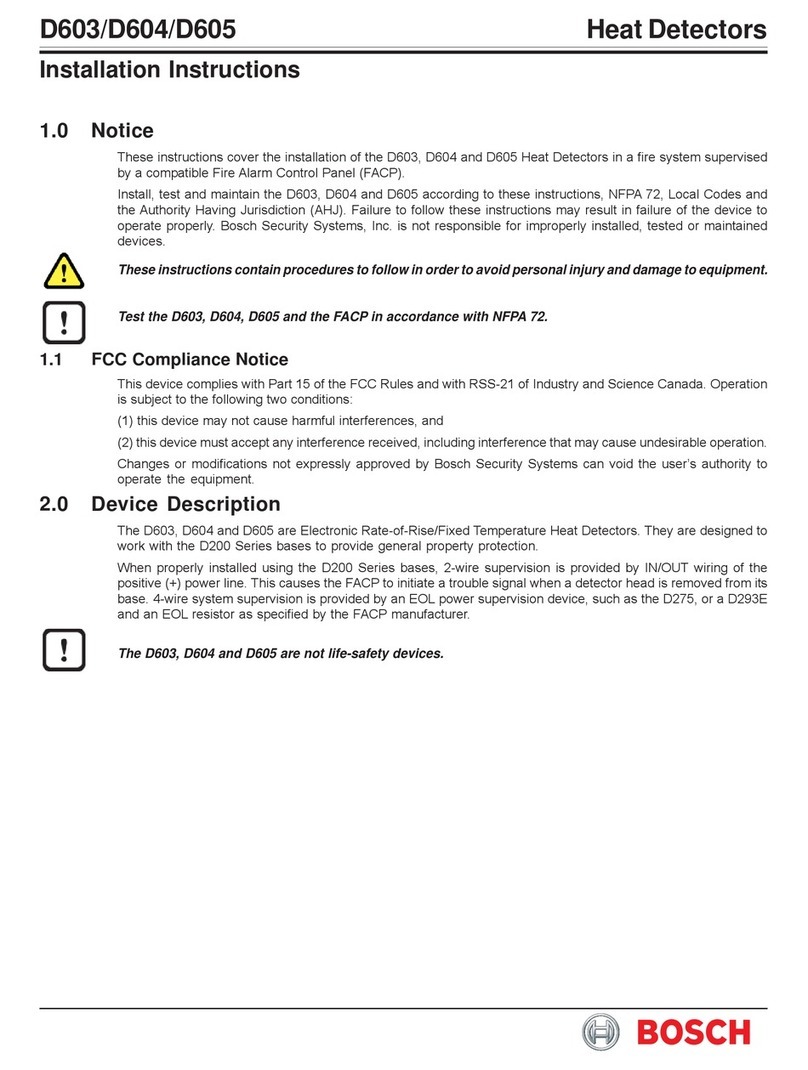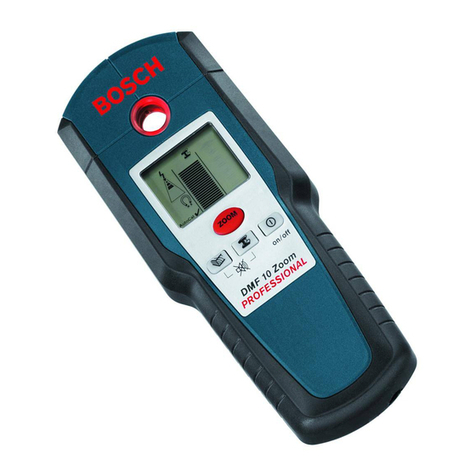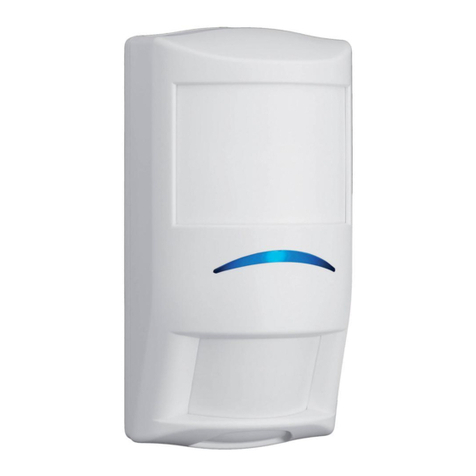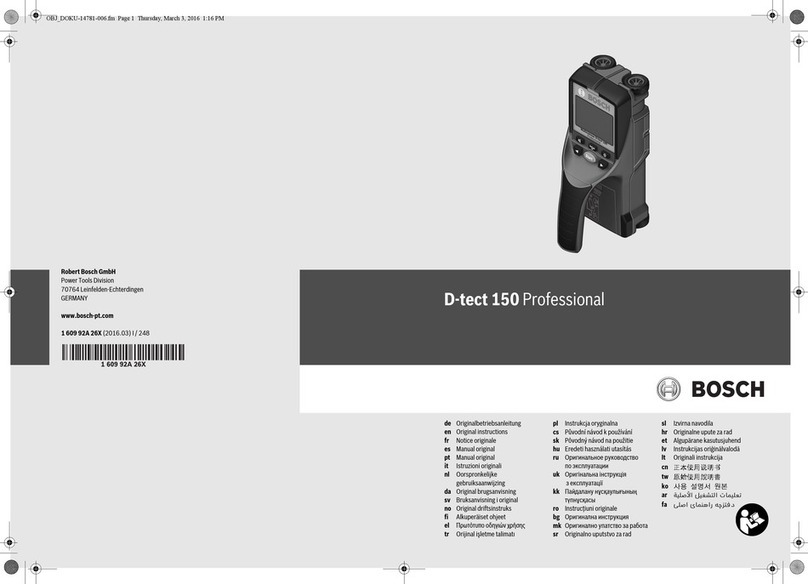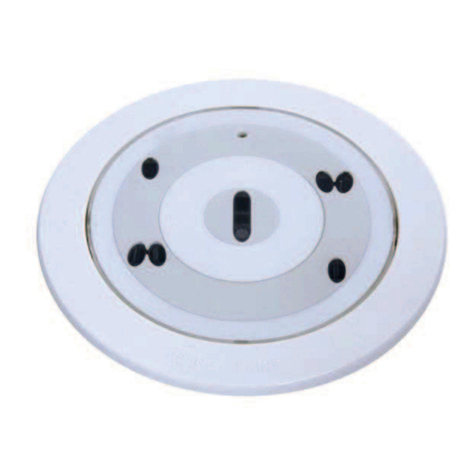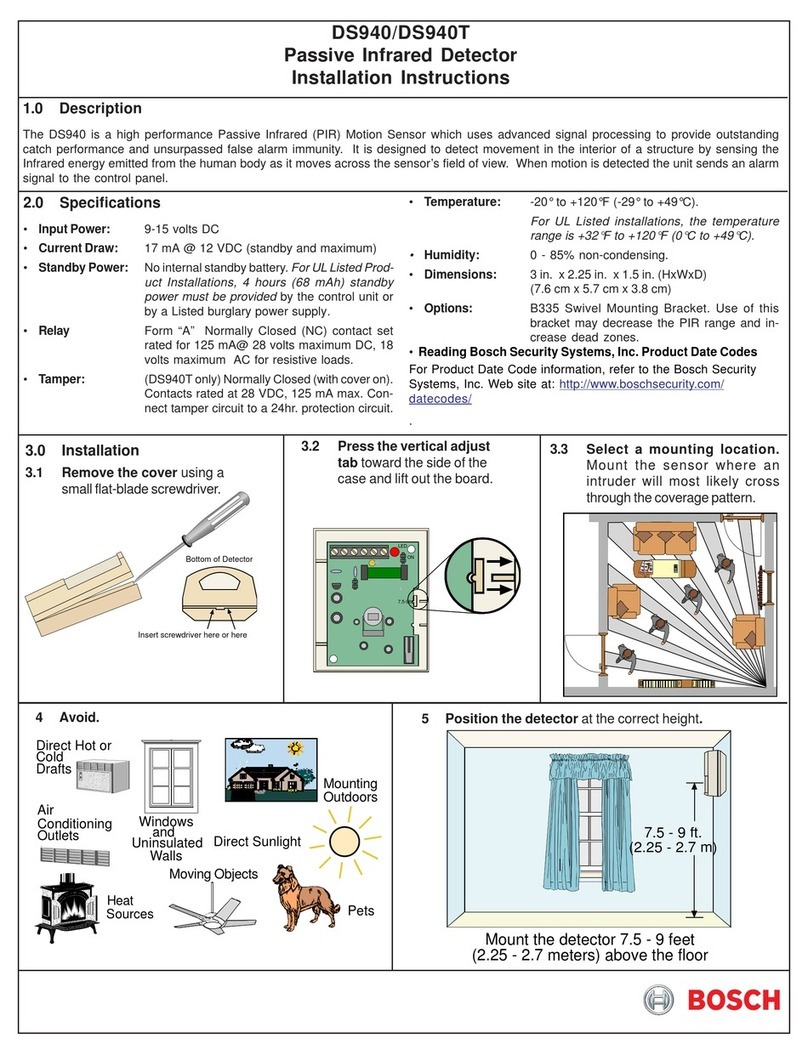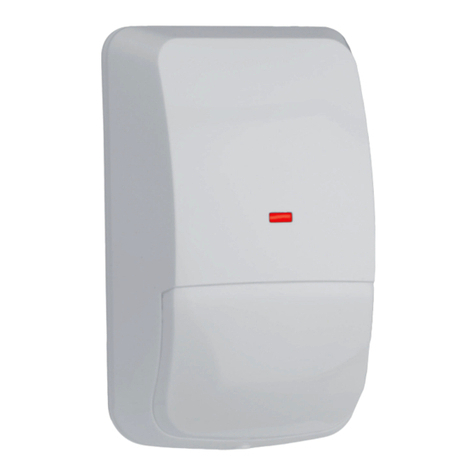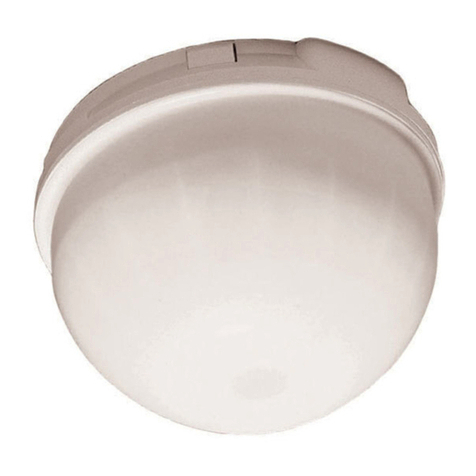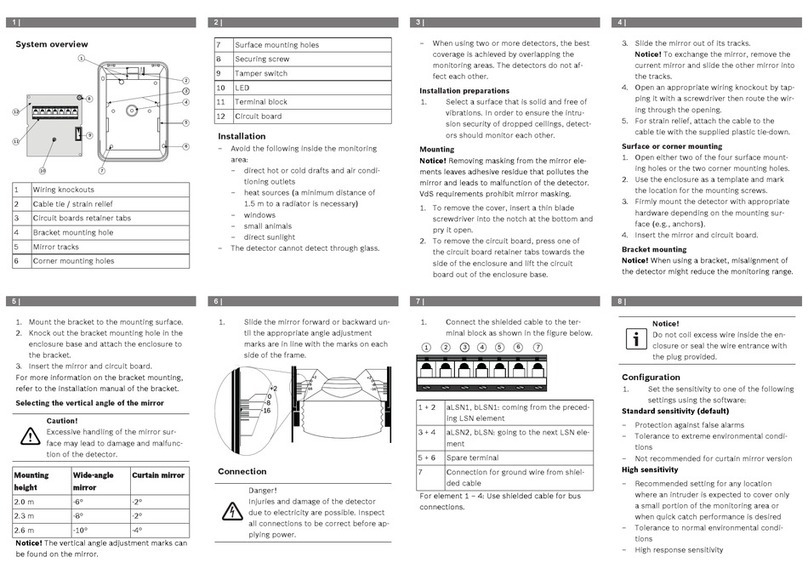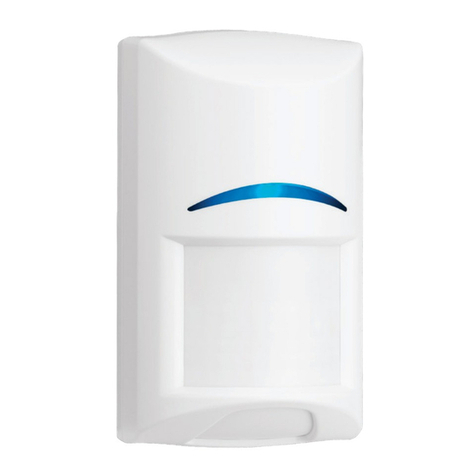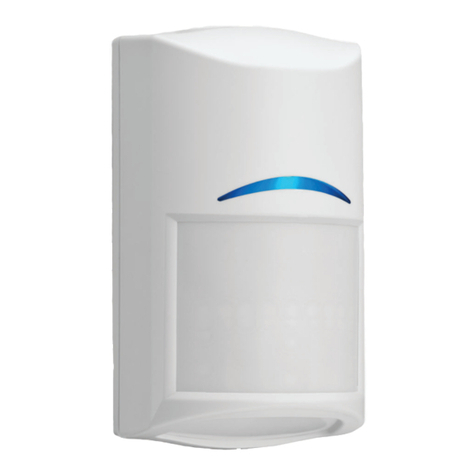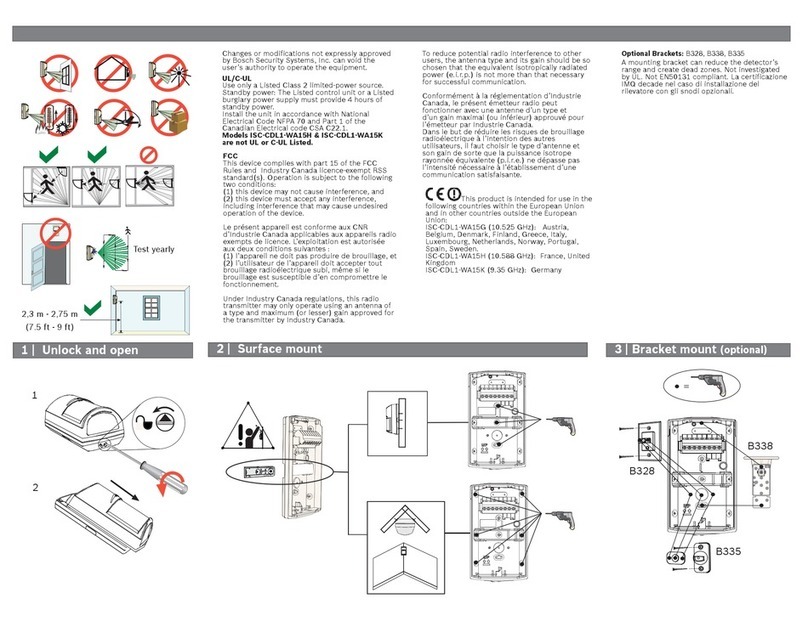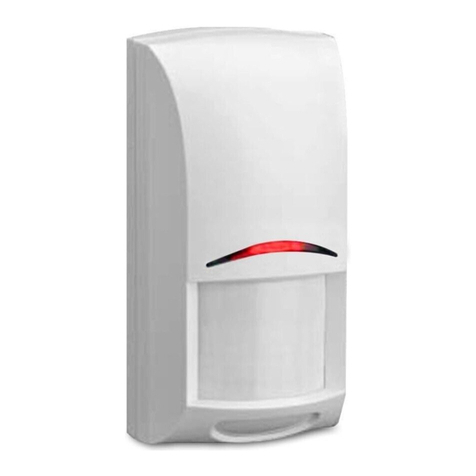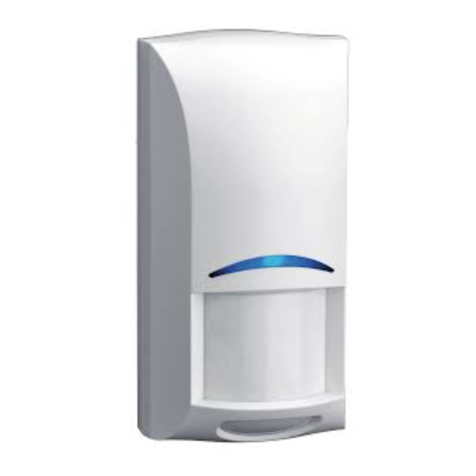
Installation Instructions
DS825, DS825T, DS840, DS840T
TriTechPIR/Microwave Intrusion Detectors
1.0 General Information
The DS825 Series and DS840 Series are microprocessor-based
TriTech Passive Infrared/MicrowaveIntrusionDetectorsthatprovide
immunity to false alarms caused by pets [a dog up to 100 lbs.
(45 kg) or up to 10 cats, and other small animals such as birds
and rodents]. Patented Passive Infrared and Microwave signal
processing provides excellent catch performance with freedom
from false alarms.
2.0 Specifications
•Input Power: 6 to 15 VDC, 15 mA DC nominal (up to
35 mA DC during walk testing).
•Standby Power: No internal standby battery. Connect to
DCpowersourcescapable ofsupplying
standby power. For each hour of
standbytime needed, 15 mAh are
required. For UL Listed Requirements,
four hours (60 mAh) are required.
•Alarm Relay: Silent operating Normally Closed reed
relay. Contacts rated 3 W, 125 mA,
28 VDC maximum for DC resistive
loads; and protected by a 4.7 Ω,1/2 W
resistor in the common “C” leg of the
relay. Do not use with capacitive or
inductive loads.
•Temperature: -40°F to +120°F (-40°C to +49°C). For
UL Certificated Installations, the
temperature range is +32°F to +120°F
(0°C to +49°C).
•Microwave Frequency:
DS825(T)/DS840(T): 10.525 GHz (UL Listed)
DS825TA/DS840TA: 10.687 GHz (Exportonly, not ULListed)
DS825TB/DS840TB: 9.9 GHz (Export only, not UL Listed)
•Coverage:
DS825 Series: 25 ft. x 25 ft. (8 m x 8 m)
DS840 Series: 40 ft. x 40 ft. (12 m x 12 m)
•Internal Pointability: +1° to –18° Vertical.
•Optional Tamper: The DS825T, DS825TA, DS825TB,
DS840T, DS840TA, and DS840TB
havea Normally Closed(with cover on)
tamper switch. Contacts rated at
28 VDC, 125 mA max. Connect the
tamper circuit to a 24-hour protection
circuit.
•Options: B335Low Profile SwivelMount Bracket
and B338 Ceiling Mount Bracket. (The
use of brackets may reduce range and
increase dead zone areas.)
• Reading Bosch Security Systems, Inc. Product Date Codes
For Product Date Code information, refer to the Bosch Security
Systems, Inc. Web site at: http://www.boschsecurity.com/datecodes/
•Compliance: This device complies with Part 15 of the FCC
Rules and with RSS-210 of Industry and Science Canada.
Operation is subject to the following two conditions:
(1) this device may not cause harmful
interference, and (2) this device must accept any
interference received, including interference that may cause
undesirable operation.
Changesor modifications not expressly approvedby Bosch Security
Systems can void the user's authority to operate the equipment.
3.0 Mounting
3.1 Mounting Considerations
•Neverinstallthe detectorin anenvironmentthat causesa constant
alarm in one technology; it should never be left to operate with
the tri-color LED in a constant green, yellow, or red condition. A
detector with one technology in constant alarm, will cause an
alarm output whenever the other technology alarms. Good
installationsstart with the LED OFF when thereisno targetmotion.
The best installations will have background noise voltages below
recommended limits.
• Point the unit away from outside traffic (e.g. roads, alleys, and
parking lots).
NOTE: Microwave energy will pass through glass and most
common non-metallic construction walls.
• Avoid direct or indirect sunlight.
• Pointtheunit awayfrom glassexposed totheoutdoors andobjects
that may change temperature rapidly.
NOTE: The PIR detector will react to objects rapidly changing
temperature within its field-of-view.
• Eliminate interference from nearby outside sources.
• Avoid installations where rotating machines (e.g. ceiling fans) are
normally in operation within the coverage pattern.
• Select a location likely to intercept an intruder moving across
the coverage pattern.
• The surface should be solid and vibration-free.
• Mounting height range is 6 to 8 ft. (1.8 to 2.4 m). The
recommended height is 7.5 ft. (2.3 m). Mounting height for Pet
Applications is 6.5 ft. (2 meters).
3.2 Mounting the Detector
• Remove the cover by inserting a thin flathead screwdriver into
the locking tab hole at the bottom front of the detector, pressing
in, and pulling the cover up and forward.
NOTE: Mount the unit with the terminal block up.
• Remove the circuit board from the base by pulling outward slightly
on one of the Circuit Board Locking Tabs (see Figure A).
Terminal
Block
LED
LED Jumper Microwave
Adjustment
Tamper
Terminals
Mirror
Assembly
Cable Knockout
Circuit Board
Locking Tab
(One on
Each Side)
Corner
Mounting
Holes (2)
Surface
Mounting
Holes (4)
Bracket Mounting
Hole Mirror
Tracks (2)
Circuit Board
Retainer Tabs (2)
Rear enclosure and mounting holes
Wiring
Knockouts
Figure A - Location of Features
• Remove the mirror.
